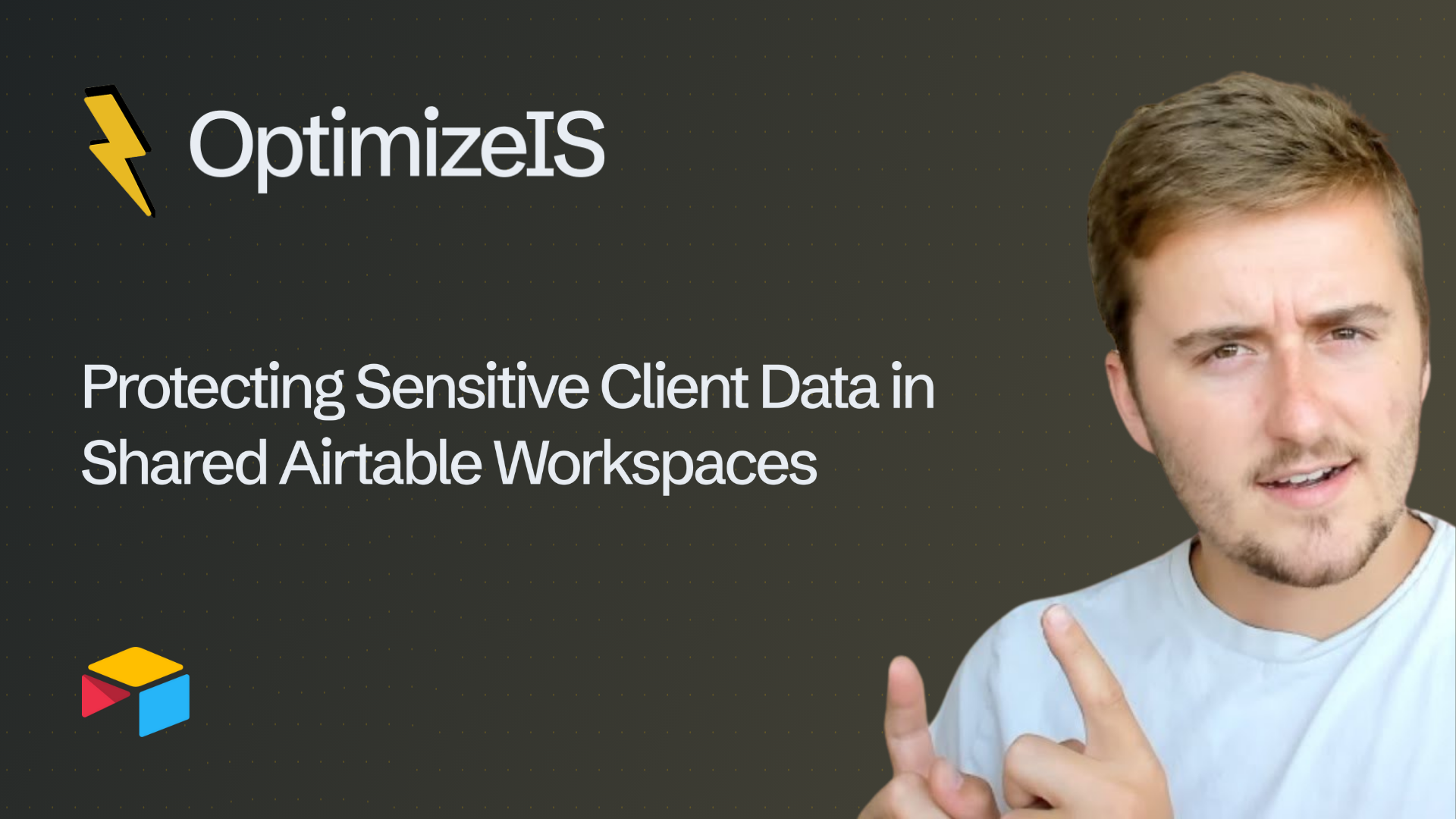Secure your client data in Airtable using granular access controls, field-level restrictions, and strong data governance in Airtable for privacy compliance.

Managing client data efficiently is critical for every business. Airtable offers incredible collaboration and database tools. But when sensitive information needs to be shared across teams, ensuring robust Airtable security is absolutely essential. Without proper measures, confidential client information can be exposed. This leads directly to compliance risks and severe damage to client trust.
We must combine Airtable security features with smart workspace management. This allows organizations to protect client information while still enabling effective secure collaboration. From configuring tight Airtable access roles to maintaining strict privacy compliance, businesses can build safe, controlled environments for all their data.
Shared Airtable workspaces boost collaboration, but they also introduce serious vulnerabilities:
· Unauthorized access to sensitive client records.
· Accidental editing or, worse, deletion of critical information.
· Exposure of confidential financial or personal data.
· Non-compliance fines related to GDPR, CCPA, or HIPAA.
For any business handling sensitive information—financial details, personal identifiers, or proprietary project data—safeguarding this information is non-negotiable.
Airtable provides multiple layers of Airtable security to protect your workspace data. These include permissions at the workspace level, base and table access controls, and even field-level restrictions. Used strategically, these features allow teams to perform secure collaboration without compromising client privacy or organizational integrity.
The first step is always the Principle of Least Privilege. Determine exactly who needs access and at what level. Airtable offers several Airtable access roles:
· Owners/Admins: Full control over all settings, users, and bases.
· Editors: Can modify data but often have restricted access to certain tables or views.
· Commenters: Can view and comment, but cannot edit records.
· Read-Only: Can only view records and Airtable dashboards without making any changes.
Assign roles strictly based on job responsibilities. This ensures sensitive client data protection is only extended to those who absolutely need it.
Airtable allows granular control over who can view or edit specific bases or tables. Financial or legal client records should be isolated. Store them in a separate base with much stricter Airtable permissions management. Other departments, like marketing, only need access to aggregated or anonymized data.
You must also use private views to share limited data with external partners without exposing the rest of your sensitive fields.
For the most sensitive fields—Social Security numbers, detailed financial information, or proprietary notes—you must use field-level restrictions. By hiding these fields in certain views, you can prevent unauthorized users from ever seeing confidential information while still allowing them to work with other relevant data required for their Airtable workflows.
When inviting collaborators to Airtable, you must follow simple rules:
· Verify all email addresses meticulously.
· Never use public, unsecure links for sensitive records.
· Limit sharing duration if temporary access is required.
This ensures client data protection is maintained even when working with third parties through Airtable integrations.
Many teams use Airtable automation to streamline Airtable workflows. When automating tasks that involve sensitive data, you must consider the security implications:
· Restrict Airtable automation triggers to specific users or specific tables only.
· Never send confidential data through insecure channels like unencrypted email. Use internal notifications or secure Airtable dashboards for updates instead.
Your industry dictates your compliance needs (GDPR, CCPA, HIPAA). Airtable supports privacy compliance by offering:
· Audit logs for tracking every record change and user activity.
· Two-factor authentication (2FA) for workspace users.
· Secure cloud hosting with encryption at rest and in transit.
You must regularly review your Airtable workflows to ensure your data handling practices meet all regulatory requirements. This is key to robust data governance in Airtable.
Treat this as mandatory. Periodically audit your workspace to check:
· Who currently has access to sensitive bases or tables.
· Whether former collaborators or old accounts still have permissions.
· That Airtable automation steps haven't inadvertently exposed confidential information.
Consistent reviews reduce the risk of unauthorized access and reinforce a strong culture of Airtable security.
1. Principle of Least Privilege: Grant access only to those who need it to perform job functions. No exceptions.
2. Workspace Segmentation: Separate highly sensitive client data into dedicated bases with tighter controls.
3. Field-Level Control: Hide or restrict access to sensitive fields and create filtered views for different teams.
4. Monitor and Audit: Use Airtable’s logs and reports to track who accesses or modifies data (Airtable system optimization).
5. Educate Team Members: Train everyone on security protocols and the vital importance of client data protection.
When implemented correctly, strong Airtable security not only protects your clients but also enhances team efficiency. Teams can perform secure collaboration confidently, knowing that sensitive information is compliant and guarded. Secure workspaces reduce risks, prevent breaches, and build invaluable client trust.
.png)
Transform creative project management by connecting Airtable and Canva. Learn how Airtable automation and integrations eliminate friction for Airtable for creative teams.
.png)
Automate inter-department workflows with Airtable to eliminate manual team handoffs, boost project collaboration, and achieve real-time project status updates.
.png)
Learn how Airtable for education simplifies student records and complex course scheduling. Use Airtable automation and data visualization for better academic data management.